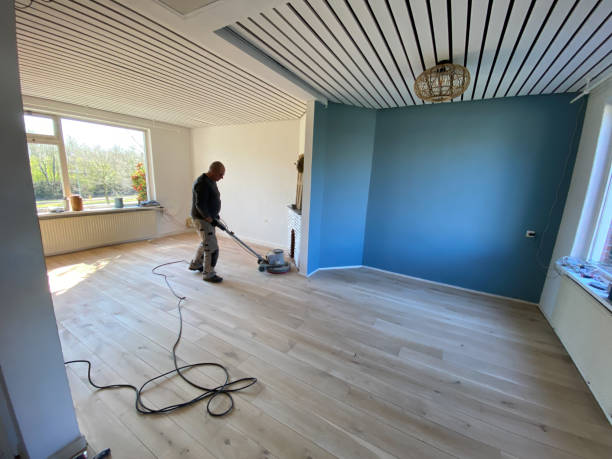Tile floors are both stylish and durable. They’re a popular choice for residential and commercial properties. Even though these tiles are extremely durable, they may become scratched, dulled, and scuffed over time.
Tile floors can be restored to their original shine by buffing them periodically. For the best results, keep these things in mind:
What is Buffing?
Exfoliating the skin is similar to buffing floors. This is a deep cleaning method that involves removing the surface layer of grime and restoring the shine of the tiles.
If you want your floor to last the longest, you must buff every type of flooring, whether it be tile, vinyl, or wood. Use the correct products and tools to avoid damaging the floor.
There are two methods of floor buffing: dry and spray. Spray buffing uses liquid cleaners and a polishing solution. The first is used to remove dirt, and the second is used to smooth over scratches and scuffs.
Floor buffing machines with speeds up to 1,000 RPMs are best for spray buffing. This method allows manual buffing using felt or foam pads.
Dry buffing, on the other hand, is just as it sounds: no liquids are used. Floor buffers with speeds above 1,000 RPMs are able to remove dirt, grime, and marks. Since dry buffing machines are difficult to use, it is best to leave this type of floor buffing to professionals such as Crewcare.
What is the difference between buffing and polishing?
It’s not just about restoring the shine to tiles, but also cleaning. You’ll be amazed at how dull your floor will look once you have removed a thick layer built up of grime. The dirt in the grout of tiles can also be removed by buffing.
Polishing also adds a protective coating to a freshly buffed surface. Floor polish not only gives a more pronounced sheen but also fills in small scratches to make the surface look more even.
The shine of most tile floors will last for 2 to 4 weeks. If there is a lot of foot traffic, it may be necessary to polish the floor more frequently. You may need to polish some floors more often. A building’s foyer or the living room of a house are good examples.
How often should I buff tile floors?
Buffing is more frequent than polishing. It is best to buff the floors once a month, especially in buildings where people come and go every day. You can polish floors in low-traffic zones about every two months.
Buffing your floor can make it last longer, and not just for aesthetic reasons. By removing the accumulation of dirt and gunk, you can also maintain the structural integrity. You can save money on maintenance and replacement.
How Do I buff and polish tile floors?
Clear the area before you begin buffing tiles (or any other floor). You should remove all large furniture like cabinets and tables to polish the floor.
After this, you should restrict access to that area. If you are buffing a closed area, you can close it off or place signs saying “wet floors” if the space is open.
The next step is to thoroughly clean and dry your floor. When you begin buffing the floor with debris on it, the particles will scratch or gouge its surface. It can also be ground into the floor finish. This can make it difficult to remove without stripping the floors.
For a thorough clean, use a suitable product to wash and scrub your floors. Rinse with water. Be sure the floor is dry before buffing. You can also use a powerful vacuum. It’s important to remove all debris to avoid damaging your floor.
After you have made the preparations, you are ready to buff your floor. To get the best results, follow the steps below:
1. Apply the buffing liquid. This is an important step if you are using the spray-buff method. Use a sprayer and follow the instructions to get a nice, uniform coat. Make sure to use the right product for your floor.
2. For dry buffing, contact a commercial cleaner. Contact a commercial cleaner for dry buffing.
3. You should dry the floor at least twice, especially if it hasn’t been done in a long time. Dry the floor with the buffing machine without adding more water or buffing spray. This will produce a smooth, shiny finish.
You can also concentrate on scratches and scuffs during this step. These spots should be buffed a bit longer to remove any remaining marks and smooth out the surface.
4. Add a finishing touch. Your tile floors may be a bit slippery after buffing. You can use a non-slip coating to make sure your tiles are safe. This is not necessary to do every time you polish the floor, but it is highly recommended.
Apply polish immediately after buffing if it is on your schedule. To ensure that the polish lasts as long as possible, keep your feet and shoes away from a freshly polished floor.
While it may be a little work, keeping your floors polished and buffed will make a huge difference in their appearance and durability.

